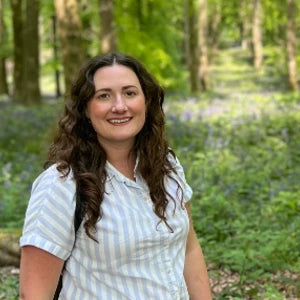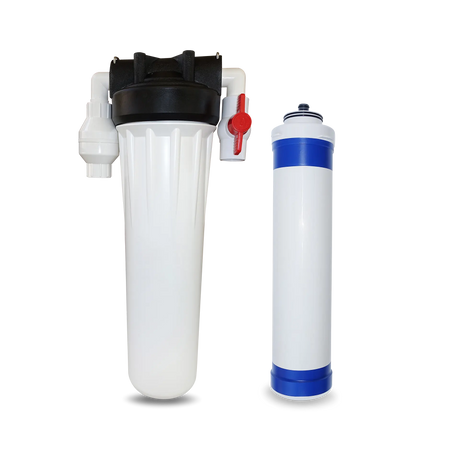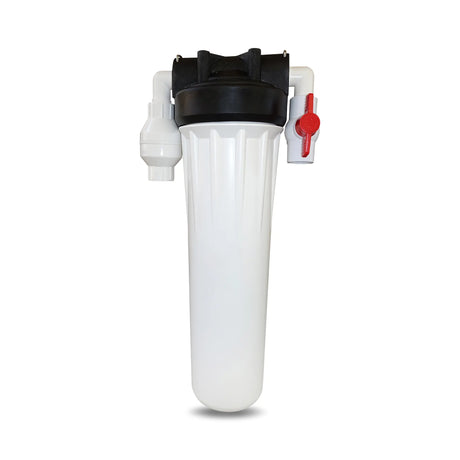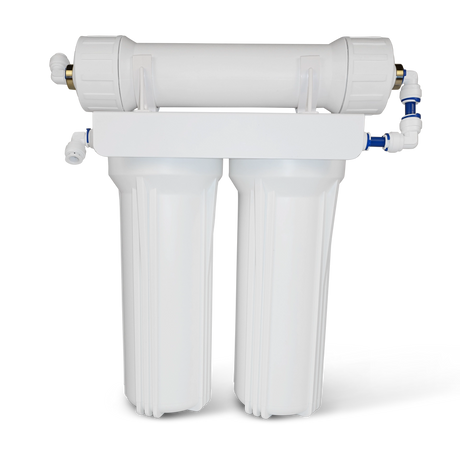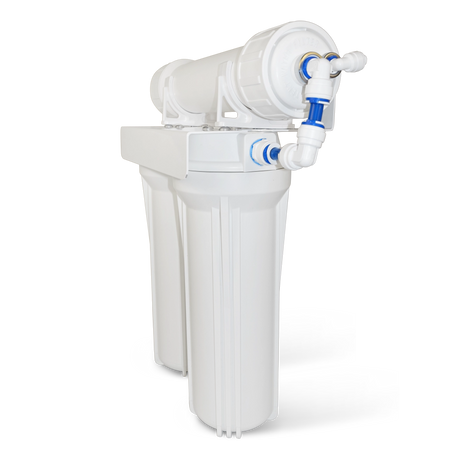Is Los Angeles Tap Water Safe to Drink? 2021 Water Quality Guide
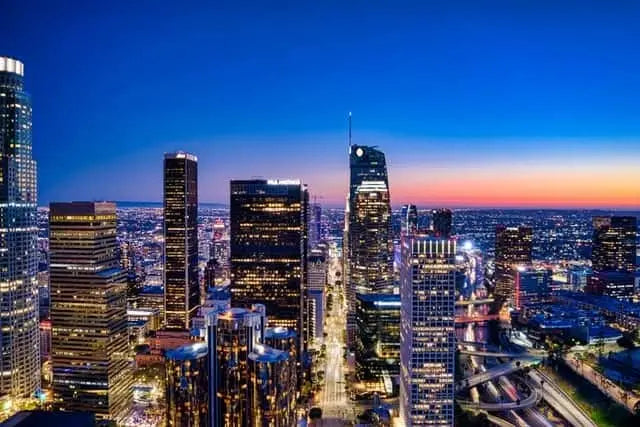
At the end of 2020, the safety of California tap water made headlines when the Environmental Working Group published a study linking California tap water to thousands of cancer cases. Scary.
We previously published a version of this article on March 16, 2017, which at the time a number of Los Angeles water utilities we not in compliance with federal standards for drinking water. They have since improved, but here's the original findings.
Californians - all Americans, rather - should be rightfully concerned with the quality of drinking water coming from their taps. For many years, there has been the public perception that LA tap water is unfit for drinking. Many Angelinos believed the water coming from their taps was nasty, unsafe, and to avoid drinking it at all costs.
Although LA tap water quality has improved remarkably over the past several years, residents are right to query whether or not it’s safe to drink. Since not all contaminants are reported or regulated, there's certainly a chance Los Angeles tap water can be harmful. More contaminants can appear at any time, whether due to new exposure or new discoveries. In 2017, the Los Angeles Department of Water and Power declared LA tap water was “as clean as bottled water.” Unfortunately, bottled water isn’t as safe as we’d like to believe either. So is LA tap water safe to drink? Perhaps legally, yes, but filtered water is much better."We want people to know that 'legal' does not necessarily equal safe. Getting a passing grade from the federal government does not mean that the water necessarily meets the latest health guidelines." - Sydney Evans, EWG Science Analyst
Is Tap Water Safe to Drink in Los Angeles for Residents and Travelers?
With over 500 square miles of land and 12 million people living in the Los Angeles metro area, LA is a big place with a lot of water utility companies. Therefore, you must check with your individual water utility company to determine what's in your tap water. Please visit the EWG's Tap Water Database to determine if your water is in compliance. Since 2010, the EWG has been analyzing drinking water quality of 30 million state water records, nationwide. It's important to point out that just because water is "in compliance with federal health-based drinking water standards," legal doesn't always mean safe. Several experts say federal laws that regulate tap water really are out of date. For example, the Safe Drinking Water Act controls only 91 contaminants - there's more than 60,000 chemicals used in America. As EWG explains:Legal limits are based on economic and political considerations that usually don’t reflect the lower levels that scientists have found pose health risks. Indeed, over 85 percent of the cancer risk calculated in the EWG study is due to contaminants that were below legal limits. Legal limits may also be based on outdated science: No new contaminants have been added to the list of nationally regulated drinking water pollutants in two decades. - Environmental Working Group, 2019At the end of the day, it's obviously up to you if you want to drink the tap water. Will LA tap water kill you on the spot? No, of course not. Should you let yourself become a dried up dehydrated mess because you have nothing but tap water to drink? Again, no. Most of Los Angeles water is legally okay. Filtered water is excellent.
Los Angeles Water Quality and Safety
With more than 60,000 chemicals used in the USA, a lot of them might make their way into LA drinking water entirely unregulated. They may not be on a unacceptable contaminant lists as there aren't any standards set for them. Previous tests show elevated rates of trihalomethanes and haloacetic acids which are byproducts of the chlorine disinfection of regular water. These byproducts have the capacity to drastically affect an individual's health.Radon, arsenic, chemicals oh my!...
Studies have linked such contaminants to the higher threat of miscarriage and birth defects as well as increased rates of cancer. Radon is another risk found in some LA tap water. There have been times when LA well water testing has shown radon levels that surpass the EPA's requirements. That is a major concern for all those that drink regular water which comes from affected wells. Radon exposure may increase an individual's risk of developing cancer. Many individuals are unaware that the glass of LA tap water can even contain arsenic. This poisonous material is a known carcinogen that's found in many varieties of herbicides and pesticides. It's a Class 1 carcinogen that's in the same class as such carcinogens as asbestos and the hepatitis C virus. It's been associated with lots of varieties of cancer as well as blindness and paralysis. Safe water requirements limit the quantity of arsenic that's acceptable in water, but are these levels really safe? It is essential for consumers to realize that legal drinking water is not necessarily the same thing as healthful drinking water.Tap water in Los Angeles may be okay legally. Your water utility company definitely isn't tackling every contaminant though - a water filtration system can though!
Individuals and families can take precautions to make sure they are drinking the cleanest, safest water possible. If harmful contaminants have been found in your water - even at levels below the federal legal limits - you are highly encouraged to filter your water. Even if your water utility company has a stellar record, there may be contaminants lurking that aren't even being monitored.Drinking water rarely contains only one contaminant, yet regulators currently assess the health hazards of tap water pollutants one by one. This ignores the combined effects of multiple pollutants, which is how people ingest them in the real world. - Environmental Working Group, 2019Now I know you may be thinking "well, you are a water filtration company so of course you want to sell me a water filter..." Yep, we do. I think you get the point that legal standards for water safety are out of date, don't cover all contaminants, nor the combined effects of contaminants. Your water utility company definitely isn't tackling every contaminant, but a water filtration system can. Do you want to drink and use clean, healthy water that looks and tastes great? Do you want peace of mind that the water you are drinking and using isn't laden with cancer causing toxins and harmful contaminants? Of course you do. So buy a water filtration system. If not from us, then someone else but please just buy a water filtration system!
Top Water Filters for Los Angeles Tap Water
Whole House Ultrafiltration Membrane Filter System
The Premiere PS-1000 ultrafiltration systems removes bacteria, viruses, and giardia & cryptosporidium from your water. It has a continuous, 8 gallon per minute flow rate which is perfect for most homes. If you need a higher flow rate, you can “stack” these systems. Ultrafiltration technology does not require a storage tank or electricity to operate. One of the best features of ultrafiltration and why this system is worth buying is that you can easily clean the membrane: simply turn a valve to flush it. This cleanable membrane saves money in the long-run because it lasts 3 – 5 years (or more). There’s also no drop in water quality. With other filter systems, there’s no option to turn a valve to clean the filter – it means you have to buy a new replacement water filter. Don’t waste time and money changing filters every year, six months, or more with other filter systems. You’ll know it’s time to flush the PS-1000 membrane when there is a drop in water pressure coming from the system.Ultrafiltration System for Drinking Water
The PS-PURUF ultrafiltration drinking water system purifies and disinfects drinking water by removing bacteria, chlorine, pharmaceuticals, pesticides, lead, cysts, viruses, silt, colloids, silica, clay, iron, sand, volatile organic chemicals (VOCs), chlorine, chloramines, trihalomethanes (THMs), methyl tertiary butyl ether (MTBE), and more. Unlike reverse osmosis, there is zero waste water during the filtration process which is ideal for California's water regulations due to drought.Hydro Guard Reverse Osmosis System
Enjoy clean, safe drinking water with the Hydro Guard HDGT-45 series reverse osmosis system. It reduces the levels of lead, nitrates, cysts (cryptosporidium, giardia), arsenic, sodium and other contaminants commonly found in tap water. This reverse osmosis system is easy to install, and uses sanitary quick change filters which makes changing water filters fast, convenient and sanitary. One of the revolutionary features of this system is it’s leak detector shut off valve (FLOWLOK ™) which silently guards against any water leaks which may occur. The Hydro Guard HDGT-45 features a compact design and delivers quality water from your tap whenever you want it.Two Stage Whole House Bacteria Water Filtration System
A complete whole house water filtration system that delivers 15 gallon per minute flow rate. First stage is a submicron absolute rating “charged” nanofiber cartridge that removes parasites (cryptosporidium & giardia), bacteria, sediment, cloudiness (turbidity), endotoxins, DNA, iron, manganese, and more. Second stage is a 5 micron premium coconut shell carbon cartridge that removes taste/odor, chlorine, chloramine, THMs (trihalomethanes), MTBE (methyl tertiary butyl ether), and VOCs (volatile organic chemicals). This cartridge also has scale inhibitor for hard water. Check out the BG-202BIV hereWe previously published a version of this article on March 16, 2017, which at the time a number of Los Angeles water utilities we not in compliance with federal standards for drinking water. They have since improved, but here's the original findings.
Los Angeles Department of Water and Power: Tap Water Quality Overview
One of the largest providers of tap water in Los Angeles is the Los Angeles Department of Water and Power which provides water to nearly 4 million people living in Los Angeles. The Los Angeles tap water quality 2017 for water from the LADWP indicates it is safe to drink, although as you can see from our case studies the level of safety for LA tap water as a whole does vary from area to area. That is, water provider to water provider. Despite having some contaminant levels that are well above the recommended health limits, it’s safe to say that LA tap water sourced from the LADWP is as safe to drink as bottled tap water. But the fact remains that although any contamination levels are in compliance with the federal guidelines, health-based guidelines may be different. Almost all of the contaminants listed are known carcinogenics, meaning that LA tap water does still carry some measure of risk for residents. The LADWP has told residents that they no longer need to spend money on bottled water and filtration systems. However, when you consider the contamination levels of Los Angeles tap water, this seems like a rather reckless statement. The EPA assesses water on a quarterly basis, so contamination levels could spike and you would not know until long after you’ve consumed the water. A water filtration system is imperative to ensure you and your family drinks the safest water possible. Water filtration is always going to be your safest option, regardless of how well treated your tap water already is. While utilities such as the LADWP have made vast improvements on the water quality over the past few years, and especially in 2017, the fact remains that there may be a spike in contamination levels at any point. And with so many unknown and unregulated contaminants present in tap water, do you really want to take a chance with your health and the health of your family?Is Los Angeles Tap Water Truly as Clean as Bottled Water?
According to the LADWP reports, 160 billion gallons of Los Angeles tap water has met with the recommended, legal limits for water contamination. Unfortunately, independent studies - most notably by the Environmental Protection Agency (EPA) - have shown such reports can be somewhat misleading. Although some of the contamination levels are indeed within the legal limits, they are not within the health guideline limitations at all. Furthermore, there are a number of contaminants with no set federal limits at all, meaning they’re not included in such reports. Albert Rodriguez, a LADWP spokesperson, claimed that LA tap water is being treated by “zapping” it “without any sort of chemicals, without any other type chlorine”. While it is true that the current Los Angeles tap water is as good as bottled water, this still does not make it the safest water possible. As you’ll see in the following utility case studies, the true health-based guidelines are often well below the federal limitations. All figures provided in the following case studies are sourced from the EWG Tap Water Database.Beverly Hills Water Department Tap Water Quality
A look at the EWG Tap Water Database report shows that Los Angeles tap water from the Beverly Hills Water Department is in violation of the federal standards for drinking water for the latest quarter (January to March 2017). Please note, January to March 2017 is the latest quarter assesses by the EPA at the time of this article (October 2017). In recent years, there are a total of eight contaminants found in levels that exceed health-based guidelines. The health-based guideline was defined by the California Office of Environmental Health Hazard Assessment (OEHHA). All of the contaminants discussed below are known carcinogenics, and the recommended limits provided by OEHHA are considered to pose little to no risk. As you’ll see, the federal limits are often many times higher than what is truly safe. By clicking on the bold bullet point titles, you can read more about each contaminant on the EWG website.- Arsenic: the federal legal limit for levels of arsenic water contamination are currently set to 10 parts per billion (ppb). At 3.22ppb, the BHWD utility is indeed within these limits. However, the health-based recommended limitation is set to 0.004ppb. The Californian State average contamination level is currently 3.00ppb, while the national average is as low as 1.33ppb. This means that LA tap water sourced from this utility are not only well above the true safety margin, but are more than double the average contamination levels of the US. Since at least 2010, arsenic has been detected above the health guideline more often than not, despite never reaching the federal limit.
- Bromodichloromethane: bromodichloromethane is only found in water that has been treated with chlorine or other water disinfectants are used to treat water. A legal limit for contamination levels does not appear to have been clearly defined at present, but the recommended health guideline is for contamination to not exceed 0.4ppb. California’s average levels are well above this, sitting at 3.51ppb, but below the national average of 4.31ppb. However, the Beverley Hills Water Department levels are at a shocking 8.44ppb, and have been consistently found in similar levels since late 2012.
- Chloroform: With the national average level of chloroform water contamination at 11.2ppb, this utility appears to be doing far better than most, with a reported level of 9.73ppb. The State of California has an even more ideal average of 7.98ppb. However, these levels are all well above the health-based recommendations of 1ppb. LA tap water sourced from this utility have shown fairly consistent contamination levels since late 2012.
- Dibromochloromethane: The Beverley Hills Water Department’s levels are well above the state average of 3.84ppb - let alone the health-based guideline of 0.7ppb. At 8.26ppb, the utility’s dibromochloromethane contamination levels are nearly triple the national average of 2.96ppb. Similar levels have been found consistently in Los Angeles tap water sourced from this utility since late 2012.
- Dichloroacetic acid: Another by-product of chemical and chlorine-based water treatments is dichloroacetic acid which is at a level of 7.41ppb in LA tap water sourced from this utility. This figure is over ten times higher than the health-based recommendation of 0.7ppb. The national and state averages are 4.05ppb and 6.00ppb respectively, and as is the case with most of the other contaminants on this list, such levels have been discovered at this utility since late 2012.
- Uranium: That’s right - the dreaded “yellowcake” ingredient used in nuclear weapons is one of the eight LA tap water contaminants found in the Beverly Hills Water District utilities. The legal limitation is set to 30ppb, but utility reports often use the “picocuries per liter” (pCi/L) measurement. For reference, 30ppb is roughly 20pCi/L. Currently, the health-based guideline sets the bar at a maximum of only 0.43pCi/L. Uranium contamination has been consistently found in the region of 1.40pCi/L since 2015 for LA tap water sourced from the Beverly Hills Water District.
- Total Trihalomethanes (TTHMs): TTHMs include chloroform, bromodichloromethane, and dibromochloromethane (all are discussed above), as well as bromoform. As mentioned before, these are all disinfectant or disinfectant by-products. The federal limitation for TTHMs is 80ppb. California has a state average of 18.7ppb, below the national figure of 23.2ppb. However, LA tap water sourced from the Beverley Hills Water Department have consistently shown levels of 28.8ppb since late 2012.
- Trichloroacetic acid: Similar to dichloroacetic acid and TTHMs, trichloroacetic acid is a by-product of chlorine and other water treatment chemicals. The current legal guideline (although not enforced) is set to 20ppb, while the health-based recommendation is only 0.5ppb. Los Angeles tap water sourced from this utility have shown levels of 5.04ppb, much higher than the state average of 3.90ppb but not much more than the national average of 4.92ppb. With the exception of the first quarter in 2013, where contamination was merely reported as “detected”, and that same year’s final quarter (when there were no tests performed to determine contamination levels), trichloroacetic acid has been found above the true safety levels in LA tap water sourced from the BHWD since 2012.
California State Polytechnic University, Pomona: Tap Water Quality
A look at the EWG Tap Water Database report shows that Los Angeles tap water from the California State Polytechnical University utility is in violation of the federal standards for drinking water for the latest quarter (January to March 2017). Please note, January to March 2017 is the latest quarter assesses by the EPA at the time of this article (October 2017). In recent years, a total of ten contaminants have been found in LA tap water sourced from the California State Polytechnical University utility. Once again, the majority are known carcinogenics, with the exception of chlorate.- Bromate: a by-product of filtration methods such as sodium hypochlorite and ozonation. Legal limits are set at 10ppb, health guidelines at 0.1ppb. The national average contamination level is 0.782ppb, Californian state average 1.02ppb, and LA tap water from this utility 1.01ppb. There have been inconsistent levels reported since 2012, including several quarterly reports where bromate contamination has not been detected. To date, the first quarter of 2015 appears to be the only time contamination levels exceeded the legal limit.
- Bromodichloromethane: LA tap water from the CSPU Pomona utility display contamination levels of 12.6ppb, well above those of the BHWD (see previous case study above).
- Chlorate: Unlike the majority of the contaminants listed, chlorate is not a known carcinogenic, but has been known to impair the function of the thyroid, making it especially dangerous for children as well as pregnant women. Like others, it is a byproduct of chemical filtration methods. The national and state contamination levels are well below the recommended health guidelines of 210ppb, being 112.9ppb and 128.2ppb respectively. However, Los Angeles tap water from the CSPU Pomona utility have a 362.5ppb contamination level. This has been a fairly consistent reading since 2014.
- Chloroform: One of the TTHMs as explained in the above case study. The CSPU Pomona sourced LA tap water has reported contamination levels of 10.4ppb.
- Chromium (Hexavalent): No legal limit exists for this carcinogenic contaminant, which is usually caused by industrial pollution and mineral deposits. Since 2014 an average national contamination level of 0.796ppb has been reported, with the California state level resting at 1.68ppb. LA tap water sourced from CSPU Pomona is much lower, at only 0.764ppb, but is still above the EPA recommended health-based limit of 0.02ppb.
- Dibromochloromethane: At 13.8ppb, Los Angeles tap water sourced from the CSPU Pomona utilities have a higher dibromochloromethane contamination level that the BHWD’s 8.26ppb. See case study above.
- Dichloroacetic Acid: Compared to the BHWD utility’s 7.41ppb contamination level, CSPU Pomona’s dichloroacetic acid detection is only 5.94ppb, 0.06ppb below the state average. It remains worryingly high above the EPA health-based recommendation of 0.7ppb.
- Uranium: LA tap water sourced from the CSPU Pomona utility averages at around 8.145pCi/L, although there have been some years where the detected level has been 0.
- TTHMs: The CSPU Pomona sourced Los Angeles tap water shows a concerning high of 45.5ppb TTHM contamination, compared to 28.8ppb in the case study above.
- Trichloroacetic Acids: While the BHWD trichloroacetic acids contamination level rests at 5.04ppb, LA tap water from CSPU Pomona has a slightly healthier reading of 4.92ppb. This remains well above the 0.5ppb recommended health limit.

